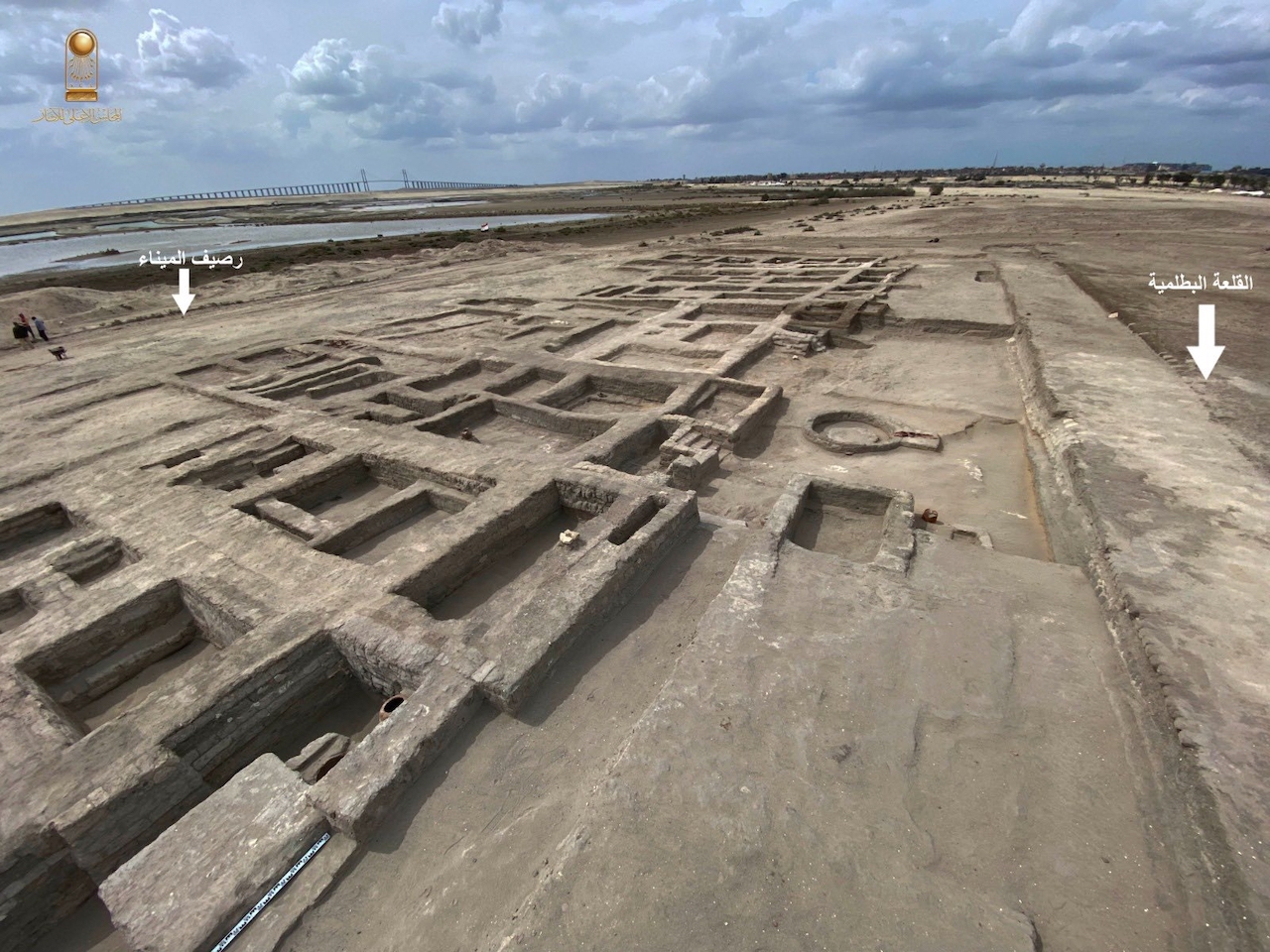Located in the northern Sinai Desert, the site is shedding new light on defensive structures built to protect Egypt’s eastern borders

Tell Abu Saifi features housing units where soldiers and their families may have lived. Egypt's Ministry of Tourism and Antiquities
Archaeologists in Egypt are unraveling the secrets of an ancient military site used during the Ptolemaic dynasty and the Roman era.
The fortress, which was discovered decades ago, is located within the archaeological site of Tell Abu Saifi in Egypt’s northern Sinai Desert. The site holds the remains of ancient military structures, including dried-up dockyards where Ptolemaic ships may have been built and repaired.
Now, researchers have uncovered additional architectural elements of the ancient site, including housing units, kilns, a defensive trench and a wide, limestone-paved road once lined with trees, according to a statement from Egypt’s Ministry of Tourism and Antiquities.
Egypt’s Ptolemaic dynasty began with the rule of Ptolemy I Soter around 305 B.C.E. The desert fortress was likely built during this time and later modified by the Romans, who ruled over Egypt beginning in 30 B.C.E. During these periods, the fortress of Tell Abu Saifi played a pivotal role in protecting Egypt’s eastern borders.
“This discovery offers a deeper understanding of the defensive systems established in eastern Egypt and reaffirms Tell Abu Saifi’s historical role as both a military and industrial hub across various eras,” says Sherif Fathy, Egypt’s Minister of Tourism and Antiquities, per Ahram Online’s Nevine El-Aref.
More:
https://www.smithsonianmag.com/smart-news/archaeologists-uncover-evidence-of-ancient-tree-lined-road-in-egyptian-military-fortress-180986594/
